Table of Contents
- Kitchen evolution with inverter fridges bringing style and supreme efficiency.
- Understanding the Inverter Technology
- Benefits of Inverter Refrigerators
- Pros and Cons At a Glance
- Is It For Every Filipino Household?
- Regular Refrigerator vs. Inverter Refrigerator: Making an Informed Choice
- Benefits and Buying Power
- Maintenance and Repair: Navigating the World of Inverter Fridges
- Inverter Refrigerators and the Magic of IoT
- Inverter Refrigerators: The Game-Changer for Your Wallet!
- Mastering the Inverter Fridge: Tips for Ultimate Efficiency!
- Inverter Fridge Safety 101: Keepin’ It Cool and Secure!
- Different Types of Refrigerators
- FAQs about Inverter Refrigerators
Kitchen evolution with inverter fridges bringing style and supreme efficiency.

The Philippines, a country known for its warm tropical climate, is no stranger to the importance of refrigeration.
For many Filipino families, a refrigerator is more than just an appliance – it’s a lifeline for preserving food and keeping drinks cold.
Over the years, technology has offered a plethora of advancements in home appliances, and one of the most notable is the inverter refrigerator, sometimes also referred to as the “inverter fridge”.
In this article, we delve into the inner workings of this modern appliance, discussing its benefits and understanding its pros and cons.
Understanding the Inverter Technology
In a traditional refrigerator, the compressor switches on and off to maintain the desired temperature inside the fridge.
In contrast, inverter technology allows the compressor to operate at variable speeds. Instead of shutting off entirely, it adjusts its speed according to the cooling demand.
Imagine driving a car. A traditional refrigerator is like stopping the car and restarting it every time you need a change in speed, while an inverter fridge is like simply adjusting the accelerator depending on how fast or slow you want to go.
Benefits of Inverter Refrigerators
- Energy Efficiency: The most compelling advantage of inverter refrigerators is their energy-saving capability. By operating the compressor at variable speeds, the inverter fridge avoids the high energy surges that come with starting and stopping the compressor continually. Over time, this leads to significant savings on electricity bills – a point of interest for many Filipino families.
- Consistent Temperature: With its ability to adjust compressor speed, inverter refrigerators can maintain a more consistent internal temperature. This ensures that food is preserved better and for longer, reducing food spoilage and waste.
- Quiet Operation: Anyone who has lain awake at night because of a noisy refrigerator knows the importance of a quiet appliance. Inverter fridges tend to operate more quietly than their traditional counterparts because of the reduced on-and-off compressor cycling.
- Durability: With fewer on-and-off cycles, the compressor of an inverter fridge typically has a longer life. This means fewer maintenance issues and longer timespans before needing a replacement.
Pros and Cons At a Glance
Pros:
- Energy Savings: In the long run, despite the higher upfront cost, the reduced electricity bills make inverter fridges a cost-effective choice.
- Better Food Preservation: Consistent temperatures translate to fresher food for more extended periods.
- Eco-friendly: Reduced energy consumption means a lower carbon footprint.
Cons:
- Higher Initial Cost: Inverter fridges tend to be pricier than traditional ones. For Filipino families on a tight budget, this might be a significant consideration.
- Maintenance Complexity: While they’re generally more durable, when an inverter fridge does require repairs, the complexity of its technology might mean higher maintenance costs or the need for specialized technicians.
- Not Always the Best for Less Frequent Use: If the fridge door is opened infrequently or if it’s for a household that doesn’t store much perishable food, the benefits of the inverter technology might not be fully realized.
Is It For Every Filipino Household?

The inverter fridge undoubtedly offers impressive advantages. However, its suitability depends on individual household needs.
For homes where the refrigerator door is continually being opened, or for those keen on long-term savings and environmental consciousness, the inverter refrigerator stands out as a fantastic option.
For households operating on a tighter budget, the initial cost might be a deterrent. Still, it’s essential to weigh this against the long-term electricity savings, especially with the Philippines’ rising energy rates.
Regular Refrigerator vs. Inverter Refrigerator: Making an Informed Choice
When shopping for refrigerators, understanding the differences between regular and inverter models can make a world of difference to your pocket and overall user experience. Let’s break down the features, benefits, and how each type affects your buying power.
Working Mechanism
- Regular Refrigerator: Operates with a standard compressor that turns on and off to maintain the internal temperature. When it reaches a certain temperature, the compressor stops, and when the temperature rises, it starts again.
- Inverter Refrigerator: Uses an inverter compressor which, instead of turning off, simply slows down or speeds up according to the cooling requirement. It operates at variable speeds.
Energy Consumption
- Regular Refrigerator: Might consume more energy because the compressor always restarts at peak power, leading to higher electricity costs over time.
- Inverter Refrigerator: Typically consumes less energy, as the compressor doesn’t stop and start frequently but rather adjusts its speed. This leads to long-term savings on electricity bills.
Temperature Consistency
- Regular Refrigerator: Can have slight temperature fluctuations due to the on-and-off cycling of the compressor.
- Inverter Refrigerator: Provides a more consistent internal temperature, reducing the risk of food spoilage.
Noise Level
- Regular Refrigerator: Tends to be noisier because of the frequent on-and-off cycles.
- Inverter Refrigerator: Generally offers quieter operation, given the reduced need for the compressor to constantly restart.
Longevity
- Regular Refrigerator: Can face wear and tear sooner because of the constant on-and-off compressor action.
- Inverter Refrigerator: Potentially lasts longer, as the variable speed of the compressor causes less strain on the system.
Initial Cost
- Regular Refrigerator: Often has a lower upfront cost.
- Inverter Refrigerator: Tends to be pricier initially because of the advanced technology involved.
Benefits and Buying Power
- Cost Over Time: While inverter refrigerators might seem pricier at first, the potential savings on electricity bills can offset this over time. Buyers looking for long-term savings might lean toward inverter models.
- Food Preservation: For those who prioritize the freshness of their food, the consistent temperature of an inverter refrigerator could be a deciding factor.
- Environmental Impact: Buyers conscious of their carbon footprint might opt for inverter models, given their energy efficiency.
- Peace and Quiet: Those sensitive to noise, especially in smaller homes or open-plan designs, might find value in the quieter operations of inverter refrigerators.
- Durability: While the initial investment is high, the potential long lifespan of inverter refrigerators can enhance buyers’ purchasing power by reducing the need for replacements or repairs.
Your buying power isn’t just about the initial cost—it’s about the long-term benefits and savings. Regular refrigerators might be more suitable for buyers on a tight budget who need an immediate, affordable solution.
In contrast, inverter refrigerators, with their energy efficiency and durability, offer value over time.
Considering both immediate needs and future benefits can guide buyers in making an informed choice.
Ah, the inverter fridge! It’s the modern superhero of the kitchen, tirelessly working in the background and using its tech-savvy brain to keep our food at just the right temperature.
But, like all gadgets, even this superhero needs some care.
Let’s dive into the art of keeping our inverter fridge in tip-top shape and understanding what makes its maintenance a tad different from its regular counterparts.
The Basics of Inverter Fridge Maintenance

- Keep It Clean: Seems obvious, right? But regular cleaning does wonders. At least once a month, remove everything from inside and wipe down the shelves, drawers, and walls with a mixture of water and mild detergent. Don’t forget the exterior! The door seals also deserve attention, as they ensure the cold air stays in.
- Mind the Location: Your inverter fridge loves to chill, but not in direct sunlight or near heat sources like ovens. Ensure there’s good airflow around the fridge to keep its cooling system running efficiently.
- Check The Temperature: Too cold or too warm is no good. Typically, the fridge’s interior should be between 2°C to 4°C and the freezer at -18°C. This ensures optimal operation and food safety.
Common Issues with Inverter Fridges
Even the champions face challenges sometimes. Here are a few hiccups your inverter fridge might experience:
- Strange Noises: Sometimes, you might hear unusual sounds. While inverter fridges are generally quieter, any abrupt or continuous weird noise warrants a check.
- Temperature Fluctuations: If your ice cream’s melting or veggies are freezing, there might be an issue with the temperature sensors or cooling mechanism.
- Water Leaks: Puddles under the fridge? Could be a blocked defrost drain or a problem with the water supply line if your fridge has a water dispenser.
Repair: Inverter Fridge vs. Traditional Fridge
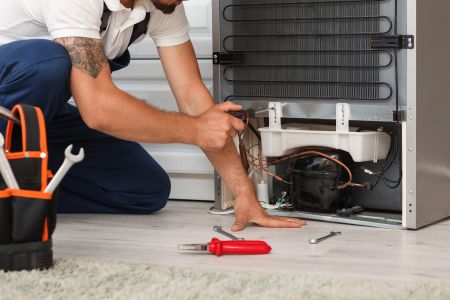
While both types have their quirks, here’s what makes inverter fridge repairs stand out:
- Complexity: Inverter fridges, with their high-tech approach, can sometimes have more intricate issues that may require specialized technicians or parts.
- Cost: Because of the advanced technology, some components of inverter fridges can be pricier to replace. On the upside, they tend to be more durable, so repairs might be less frequent.
- Energy Efficiency: If there’s a malfunction in the inverter system, you might notice a sudden spike in energy consumption. Regular fridges, when they start to falter, don’t always have such a noticeable impact on power usage.
While inverter fridges are the cool kids on the block with their advanced tech and efficiency, they do come with their own set of maintenance needs.
The key is regular care, being aware of potential issues, and understanding that when it comes to repairs, they’re a bit different from the old-school fridges we grew up with.
After all, a happy fridge equals happy food, right? 🍎🥦🍦
Inverter Refrigerators and the Magic of IoT
The fridge has come a long way from just being a big, cold box.
Today’s inverter refrigerators are not only energy-efficient but are also becoming impressively smart, thanks to the integration of the Internet of Things, or IoT. But what’s this all about?
Let’s dive in and see how our trusty fridges are getting a 21st-century upgrade.
Understanding IoT
Before we go further, let’s quickly break down what IoT means.
Imagine a world where your devices, from your coffee machine to your car, are all interconnected and can “talk” to each other.
This is essentially what the Internet of Things is about – connecting everyday devices to the internet to make them smarter and more responsive to your needs.
Smart Features of Modern Inverter Refrigerators
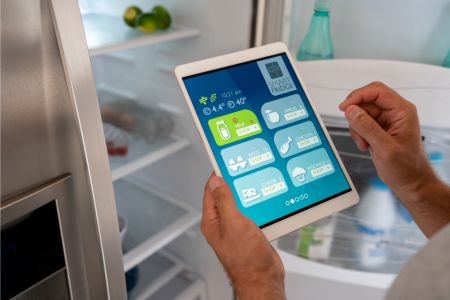
- Remote Temperature Control: Gone are the days when you had to manually fiddle with the fridge’s thermostat. With IoT, you can now adjust your inverter refrigerator’s temperature with a few taps on your smartphone, no matter where you are. Forgot to set your freezer to a lower setting? No worries, just pick up your phone and adjust!
- Usage Tracking: Wondering how often you open your fridge or how much energy it’s using? IoT-enabled inverter fridges often come with apps that provide insights into your usage patterns. This not only helps you understand your habits but can also give you tips on how to use your fridge more efficiently.
- Inventory Management: Some smart fridges come with sensors and cameras that can keep track of what’s inside. Running low on milk? Your fridge might just send you a reminder to pick some up on your way home.
- Maintenance Alerts: No more guesswork on when to clean or service your fridge. With IoT, your inverter refrigerator can send you notifications about filter changes, potential issues, or even if you accidentally left the door ajar.
- Integration with Other Smart Devices: Want your fridge to tell your smart coffee machine to start brewing when you take out the milk in the morning? With IoT, such synchronization between devices is becoming a reality.
Why This Matters
Integrating IoT with inverter refrigerators makes our lives easier and more efficient. It offers a level of convenience and understanding of our appliances that we’ve never had before.
Plus, it can lead to better food management, energy savings, and even prolong the life of the refrigerator through timely maintenance.
In a nutshell, the marriage between inverter refrigerators and IoT is shaping the future of kitchen appliances. It’s not just about keeping food cold anymore; it’s about doing it in the smartest way possible.
And as technology continues to evolve, who knows what other cool features our fridges will offer in the future?
One thing’s for sure: the kitchen of tomorrow is going to be exciting!
Inverter Refrigerators: The Game-Changer for Your Wallet!
Ahoy, budget-savvy folks! Let’s chat about something that’s on everyone’s mind: money.
Specifically, how that sleek inverter refrigerator you’ve been eyeing can play a role in your home economics. Sure, they might have a steeper price tag upfront, but the long-term effects on your wallet can be a pleasant surprise.
Let’s dive in and crunch some numbers!
The Initial Outlay
Let’s be honest, when you first check out inverter refrigerators in a store or online, that price can make your eyes water a bit. They’re generally pricier than their traditional counterparts.
But remember that old saying, “You get what you pay for”? That’s especially true here.
Monthly Energy Bills: Where the Magic Happens
- Efficiency Galore: Inverter refrigerators are the cool ninjas of the appliance world. They adjust their energy use based on the fridge’s needs. So, no more energy wastage. This efficiency means fewer kilowatt-hours consumed, leading to lower monthly electricity bills.
- The Long-Term Savings: Let’s paint a picture. Imagine saving just a modest amount every month because your inverter refrigerator is more energy-efficient. Now, multiply that by 12 (for each month) and again by, let’s say, 10 years (the potential lifespan of a good fridge). Those “modest” savings can add up to a substantial amount over the years!
Durability & Repair Costs
Inverter refrigerators tend to be built with sturdier components designed for constant operation. This durability can translate to fewer repair calls. And fewer repairs mean more savings!
Sure, if they do need a fix, some parts might be pricier because of the advanced technology.
But remember, with regular maintenance, you might be seeing the repair guy less frequently.
Resale Value
If you ever decide to upgrade or move, here’s some good news: inverter refrigerators tend to have a better resale value compared to traditional ones.
Their energy efficiency and modern tech features can make them a hot commodity in the second-hand market.
Hidden Savings
Ever had food spoil because your fridge couldn’t maintain a consistent temperature? With the consistent cooling of inverter fridges, you might find fewer spoiled groceries.
Fewer trips to replace wasted food can mean more cash staying in your pocket.
While buying an inverter refrigerator might feel like splurging at first, it’s kind of like planting a money-saving tree.
It takes a bit to get started, but over time, you’ll see the fruits of your investment. Less on bills, fewer wasted groceries, and potentially fewer repair dramas?
Sounds like a win for households everywhere! So next time you’re budgeting for the kitchen, remember: the inverter fridge could be a wallet-friendly choice in disguise. 💰❄️🍎
Mastering the Inverter Fridge: Tips for Ultimate Efficiency!
So, you’ve got yourself a shiny new inverter fridge, or maybe you’re thinking about it?
Either way, hats off to you for embracing the cooler side of technology. But owning one is just half the battle; it’s how you use it that really makes a difference.
Let’s dive into some super handy tips to ensure you’re getting the most bang for your buck and giving your fridge the longest, happiest life possible.
Location, Location, Location
- Avoid the Sauna: Don’t place your inverter fridge near heat sources like ovens or direct sunlight. It’s like making someone run a marathon in a wool sweater – not fun. A cooler spot means the fridge works less hard, which is always a good thing.
- Let It Breathe: Make sure there’s enough space around the fridge, especially behind and on the sides. Proper ventilation ensures optimal operation and less heat buildup.
Packing It Right
- Not Too Stuffed: Just like a packed subway car during rush hour, an overly stuffed fridge can be a nightmare. When it’s too full, cold air can’t circulate properly, making the fridge work harder.
- Hot Food? Cool it Down First: Placing hot leftovers directly in the fridge? Hold on a minute! Let them cool down a bit before stashing them away. This way, the fridge doesn’t have to work overtime.
Maintenance Magic
- Seal the Deal: The door seals are like the bouncers of your fridge, keeping the cold air in and the warm air out. Clean them periodically and ensure they’re sealing properly. A simple test? Close a banknote in the door. If you can pull it out easily, it might be time for a new seal.
- Defrosting Do’s: If your model isn’t a frost-free type, regular defrosting ensures maximum efficiency. A thick layer of ice can make your fridge work harder, consuming more energy.
- Cleanliness is Coolness: Dust and grime on the coils (often at the back or bottom of your fridge) can affect performance. A gentle clean with a brush every few months keeps things running smoothly.
Smart Usage
- Door Dash: Every time you open the fridge, cold air escapes and is replaced by warmer room air. So, know what you want, grab it quickly, and close that door!
- Temperature Checks: An ideal fridge temperature is around 2°C to 4°C, and the freezer should be at about -18°C. Periodically checking and adjusting ensures you’re not overcooling (or undercooling) your food.
Tech Upgrades
If your inverter fridge has smart features, utilize them! Many modern fridges offer energy-saving modes or eco settings. Dive into that manual and discover what your fridge can really do.
Think of these tips as the best practices for your inverter fridge’s happy life. A little care, the right habits, and some regular TLC can keep your food fresher, your energy bills lower, and your fridge humming joyfully for years to come.
Here’s to cold drinks, perfect ice cream consistency, and a super-efficient kitchen! 🍨🥤🍓
Inverter Fridge Safety 101: Keepin’ It Cool and Secure!
Alright, folks, let’s chat safety. Inverter fridges are the cool kids on the block when it comes to kitchen appliances, but just like anything else, it’s good to be aware of potential hitches and how to handle them.
No worries, though, we’ve got the scoop on keeping things chill and safe. Let’s dive in!
Tip-Top Tipping Point
- Stability is Key: Make sure your inverter fridge sits level on the floor. A wobbly fridge is a potential safety hazard, and let’s be honest, nobody wants their midnight snack quest to end with a fridge-leaning incident.
- Anchor it Right: If you’re in an earthquake-prone zone, consider anchoring your fridge to the wall. It provides an extra layer of safety against tipping.
Cord Conundrums
- Check for Wear: That power cord is the lifeline of your fridge. Make it a habit to check it now and then for any signs of wear, fraying, or damage. A damaged cord can be a fire hazard.
- No Overloading: Plug the fridge directly into the wall outlet and avoid using extension cords or sharing the outlet with other heavy appliances. Keep things simple and safe.
Inside Matters
- Childproofing: If you’ve got curious little ones around, consider childproof locks. An open fridge not only wastes energy but can also pose risks if kids access things they shouldn’t.
- Beware of Bottles: Glass bottles can shatter if they freeze. Avoid placing them in the coldest sections of your fridge or in the freezer. Broken glass and food? Not a good combo.
Maintenance Safety
- Clean With Care: When it’s time for a good clean, unplug the fridge. Always avoid using sharp objects to scrape ice or hardened spills. Patience, warm water, and a soft cloth will do the trick.
- Chemical Caution: If you’re using cleaning agents, ensure they’re fridge-safe. Some strong chemicals can harm the fridge’s interior or compromise the food’s safety.
Ventilation is Vital
- Keep It Clear: Ensure there’s enough space around your inverter fridge, especially at the back. Good airflow prevents overheating and ensures optimal performance.
Be Alert!
If you ever notice any unusual sounds, smells, or leaks from your inverter fridge, it’s best to consult a technician. Better safe than sorry!
Different Types of Refrigerators
The Philippine market, being a major consumer of electrical appliances, has a range of inverter refrigerator models to cater to the diverse needs of its residents.
Here’s a look at the different types of inverter refrigerators available:
Single Door Inverter Refrigerators
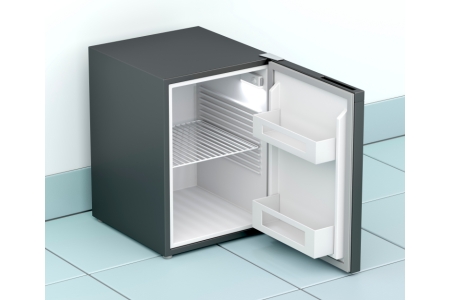
- Description: These are the basic models with a single door, catering to smaller families or singles. The freezer compartment is usually inside the main section.
- Popular in: Small apartments, dorms, or for those on a tight budget.
Top Freezer Inverter Refrigerators (or Top Mount)

- Description: These come with a separate freezer compartment located above the main fridge area. This design is quite conventional and widely preferred.
- Popular in: Medium-sized families and households.
Bottom Freezer Inverter Refrigerators (or Bottom Mount)
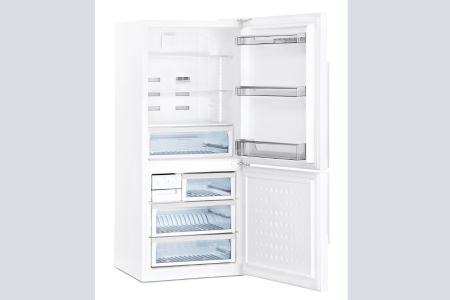
- Description: As the name suggests, the freezer compartment is at the bottom. It’s ergonomic for those who use the fridge section more frequently, as it’s at eye level.
- Popular in: Modern homes and by those preferring ergonomic designs.
Side-by-Side Inverter Refrigerators
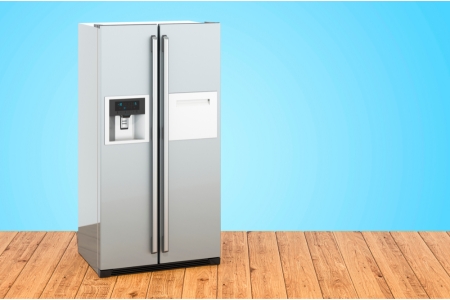
- Description: These are large units where the fridge and freezer compartments are side by side. Some come with added features like water dispensers or touch control panels.
- Popular in: Larger homes, or for families that need significant storage space.
French Door Inverter Refrigerators
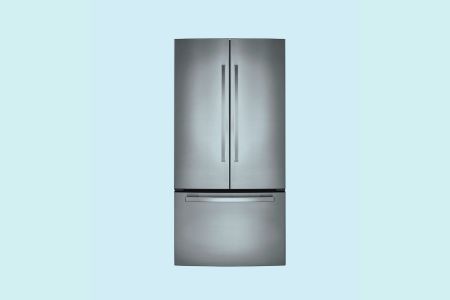
- Description: They’re a combination of side-by-side and bottom mount models. The top section has a double door for the fridge, while the freezer is at the bottom.
- Popular in: Modern kitchens and among those seeking a combination of style and functionality.
Multi-Door Inverter Refrigerators
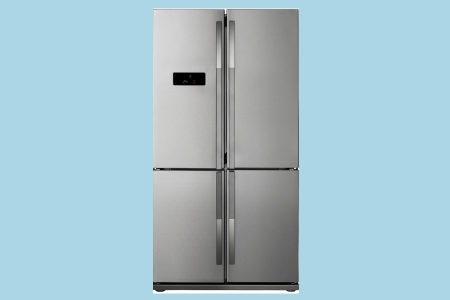
- Description: Going beyond the traditional design, these refrigerators come with multiple compartments, each designed for a specific storage need. They often have separate sections for vegetables, dairy, and more.
- Popular in: Upscale homes, large families, or cooking enthusiasts.
Smart Inverter Refrigerators
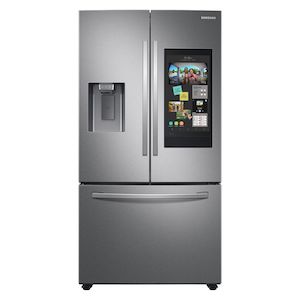
- Description: These refrigerators are IoT-enabled and can be connected to smart home systems. They might come with features like voice control, remote temperature adjustments, and usage tracking.
- Popular in: Tech-savvy households and smart homes.
The Philippine market has embraced the energy-saving inverter technology across all types of refrigerators.
Whether you’re a bachelor living in a studio apartment or a large family with a spacious kitchen, there’s an inverter fridge model tailored for your needs.
When considering a purchase, always factor in the size of your household, your budget, and any specific features you might want.
In the evolving landscape of home appliances, the inverter refrigerator stands out as a testament to innovation that serves a dual purpose: catering to our modern-day needs while being conscious of energy consumption.
From the vast array of models available to their smart features and energy-saving benefits, there’s little doubt why they’ve become a favored choice.
As we move forward, embracing such sustainable advancements will not only elevate our living spaces but also contribute positively to our environment and wallets.
The inverter refrigerator is more than just an appliance; it’s a smart investment in our future.